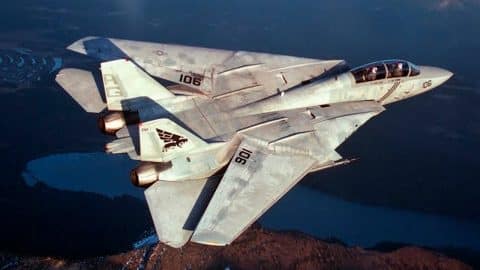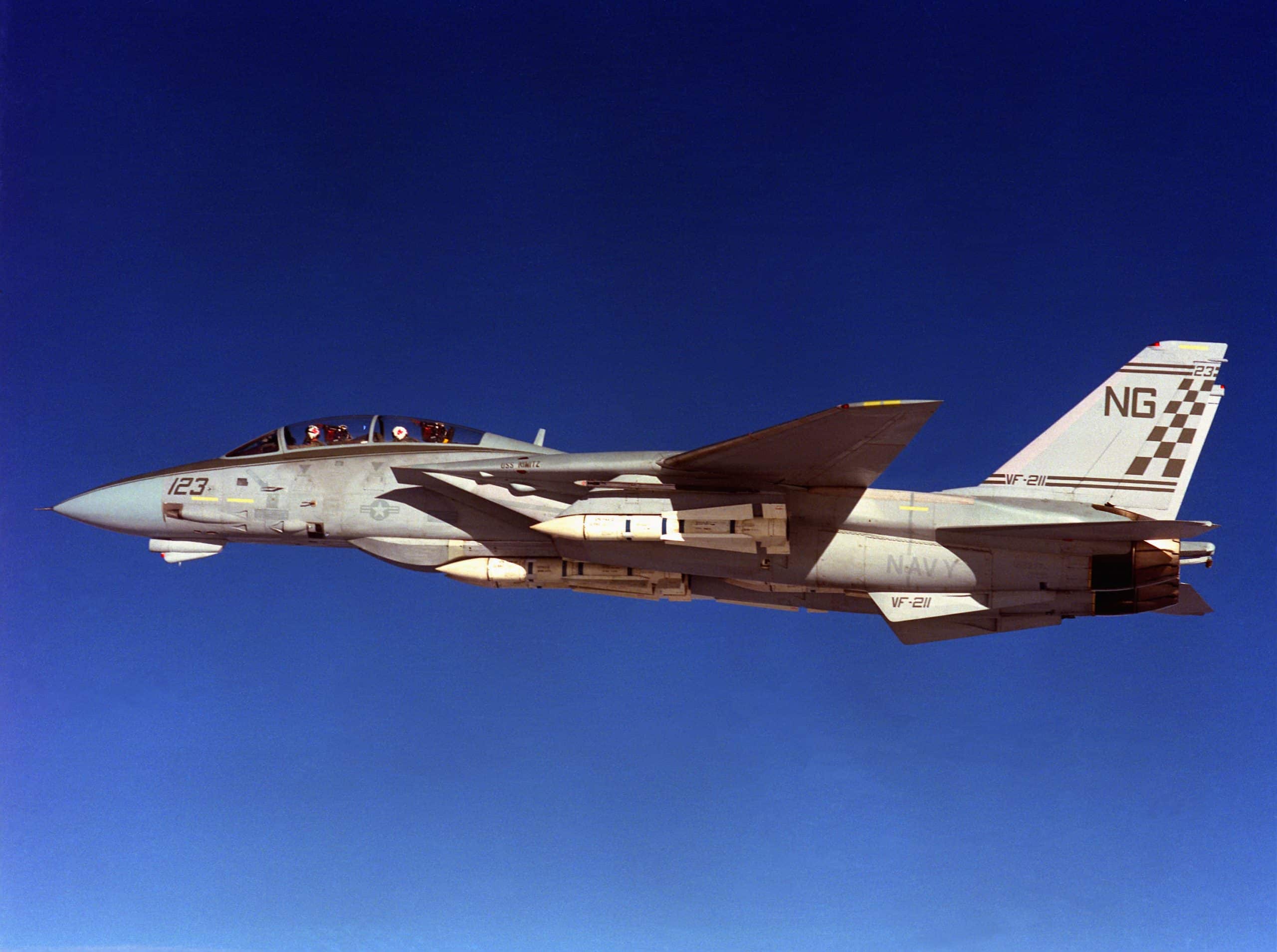
YouTube / Dark Skies
Developed for the United States Navy, the F-14 Tomcat was a carrier-capable supersonic twin-engine variable-sweep wing fighter.
Tomcats had a wide variety of air-to-ground ordnance in various configurations while simultaneously carrying AIM-7s, AIM-9s, and AIM-54 Phoenix air-to-air missiles. As a result, some of the aircraft’s missions included precision strikes against ground targets, air superiority, and fleet air defense.
After Saddam Hussein ordered the invasion of Kuwait and defied the United Nations’ demands to withdraw from the area, the United States launched a massive air offensive that targeted the country’s communications, networks, weapons factories, and oil refineries.

As the first significant engagement of the US since the fall of the Soviet Union, Operation Desert Storm included all the latest military technology such as stealth bombers, cruise missiles, laser-guided bombs, and infrared night strike equipment.
During the day of the operation, USS Saratoga and USS Kennedy joined forces to strike the critical air defense operations center using two squadrons fitted with brand-new F-14A Plus variants of the Tomcat. The first group to head into the target zone included four F-14As. Additionally, eight more Tomcats were deployed to escort eight A-6Es, four A-7Es, and three EA-6Bs.
At the time, F-14 fighters were taught to stay with the Strike Team to help protect other aircraft. They were also given orders to delay and disrupt all attempts to target their protected aircraft instead of charging toward the enemy.
As they took to the skies, an E-2 Hawkeye was able to see four groups of enemies – totaling 12 Iraqi interceptors – near the target. And with the way these interceptors were flying their orbits, it was clear they had been tasked to counter the F-14s by denying them long-range AIM-54 Phoenix shots.
Regardless of their strict doctrine, Commander Davis was not willing to take any chances.

The commander immediately ordered to look out for the Iraqi aircraft with AWG-9s in PDSTT mode – they were ready to strike at any moment.
Pulse Doppler Single Target Track – tracking mode where pulse doppler is used to track one target, to the exclusion of any other target.
Iraqis reacted promptly to this decision and decided to fly away in every direction. Still, there was one Iraqi aircraft that heavily considered engaging the incoming US formation.
A MiG-25 flying at 40,000 ft with a speed of Mach 1.2 decided to turn and approach the incoming Prowler the F-14s were protecting. The MiG pilot tried hard to get a lock, but the Prowler’s jamming capabilities proved to be more than enough to make that impossible. It didn’t take long for the MiG to abandon his mission.
With the rest of the Iraqi formation gone, the rest of the strike mission went well.